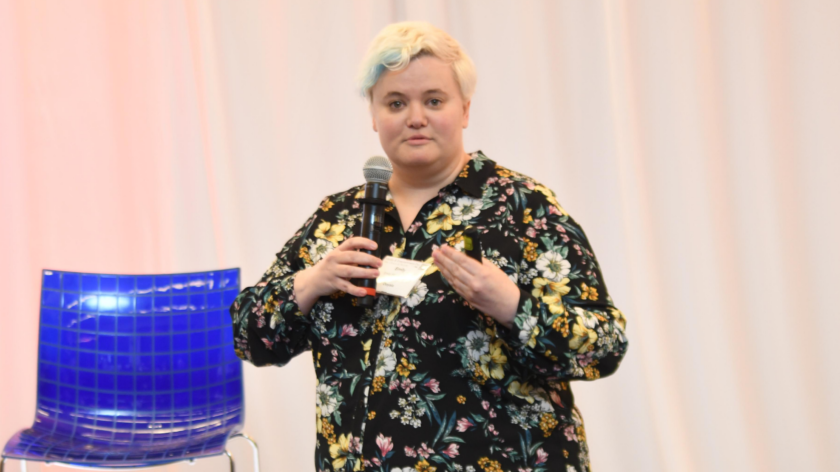Connections

Ooyala Exec: All Media Companies Would Benefit from a Connected Supply Chain
Story Highlights
NEW YORK — As the content arms race escalates, there is tremendous value in investments that create and connect horizontal platforms and such an approach to managing the content supply chain stands to significantly help companies compete today, according to Emily Hopson-Hill, VP of services at Ooyala.
“A connected supply chain is something that everybody should be targeting,” she said July 24 during a session called “Survive and Thrive – The Value of the Connected Supply Chain” at the Smart Content Summit East event, part of the Media & Entertainment (M&E) Day at the Microsoft Conference Center. A connected supply chain stands to position companies to survive and thrive without enormous content production and licensing budgets.
The 2018 M&E Day also included Content Protection Summit East and Entertainment Production in the Cloud conference tracks, providing M&E technology teams valuable insights into the creation, production, distribution, security and analysis of content.
“We’re making more content” and the “actual levels of investment we’re seeing in content creation are unprecedented at the moment,” Hopson-Hill told the summit. For one thing, “we’ve got more than double the amount of TV series in production in the U.S. than we had six years ago, and it’s not just across the big players” at which the trend is being seen, she said.
In addition, she said: “If we look at” the Ooyala Online Video Platform (OVP), “on average, all of our customers, are pushing through just over double the amount of content they were pushing through a year ago – and that’s across the board.”
That data indicates “consumers want to watch more content” – or, at least, “want more options about what content they’re going to watch when they make that decision to watch” something, she told the summit.
There’s also “many more ways for them to access that content” now also, she said, adding: “We’ve got more” over-the-top (OTT) offerings, “we’ve got more apps, we’ve got more geographies, more languages than we’ve ever had before. And this is all combining to, unsurprisingly, mean that your audience is fragmented.
You’re no longer making content just for the one audience. You’ve got to consider all the possible devices, locations — the ways people are going to be watching that content.”
On the Ooyala OVP network, she said, “this is the first time that mobile plays have topped 60 percent of the overall plays.” In the U.K., online subscribers have topped the number of traditional broadcast subscribers for the first time, she noted, adding the U.S. market is “going that way as well.”
Meanwhile, “in terms of the technology choices that content creators and aggregators are making, there is still a strong preference for best-of-breed solutions, as opposed to finding a one-stop shop that can deliver everything,” she said.
But she added: “The overwhelming thing that comes out is that 98 percent of technology users are demanding interoperable solutions.” That demand, however, is not being met, she pointed out.
There is a “strong desire to continue investing in media technology,” she went on to say, but noted that of the top 15 technologies that media companies indicated they wanted to invest in this year, “only file-based workflows and using some form of cloud-based services” are being “broadly adopted.”
Very few media companies, on the other hand, have adopted artificial intelligence, blockchain and virtual reality for now even though many companies indicated they were interested in those technologies. The main issue seems to be that budgets “aren’t keeping pace with the desire for content creation” and increased competition, she said, adding the cost of making high-quality content keeps increasing.
Turning to a connected supply chain provides one significant way for media companies to survive and thrive amidst all these challenges, according to Hopson-Hill.
The 2018 Media & Entertainment Day was presented by Microsoft, with sponsorship from IBM Watson Media, Amazon Web Services, IBM, LiveTiles, Microsoft Azure, NAGRA, NeuLion, Ooyala, EIDR, GrayMeta, MarkLogic, Qumulo, Avid, Cloudian, SoftServe and TiVo. The event was produced by MESA, the Content Delivery & Security Association (CDSA), the Hollywood IT Society (HITS) and the Smart Content Council.
Click here for audio of the Ooyala presentation or click here for the presentation slide deck.









